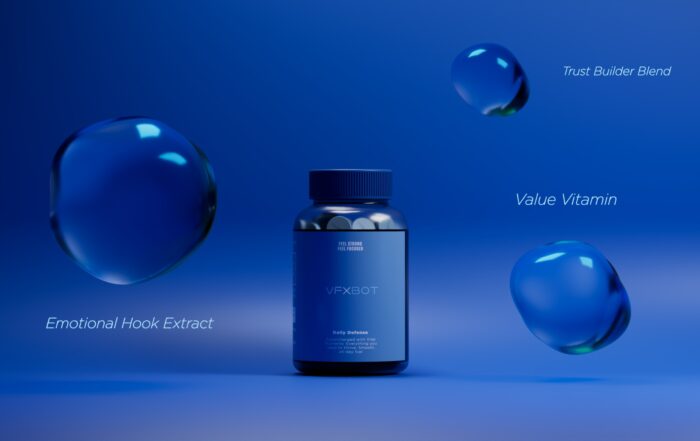In today’s digital age, advertising feels like it’s everywhere. Whether you’re scrolling through social media, watching a YouTube video, or even trying to avoid the endless pop-ups on websites, ads are vying for your attention at every turn. With the rise of short video ads on platforms like Instagram, TikTok, and YouTube, it’s even more critical for brands to stand out. But here’s the kicker: the most successful advertising campaigns aren’t the ones yelling the loudest or pushing products hardest; they’re the ones whispering directly to the heart and creating real emotional connections.

Table of Contents
It’s All About Human Connection
Think about the last ad that made a lasting impression on you. Was it because of a catchy jingle, stunning visuals, or a celebrity endorsement? Or was it because it struck a personal chord, made you laugh, or inspired you in some way? The most memorable, shareable ads don’t just bombard viewers with sales pitches. Instead, they tell stories, spark conversations, or tap into universal emotions like joy, hope, or empathy.
Some of the most powerful advertising campaigns have been able to achieve this delicate balance. Brands like Nike, Dove, and Coca-Cola have perfected the art of storytelling, going beyond a simple product pitch. For example, Dove’s “Real Beauty” campaign didn’t focus on selling soap. It sold self-esteem, body positivity, and authenticity. Similarly, Nike’s “Dream Crazy” ad wasn’t about sneakers; it was about challenging the status quo and inspiring people to chase their dreams, no matter the obstacles. These campaigns weren’t designed to sell products—they were crafted to create a connection. And that connection led to massive engagement, with people sharing these ads across social media platforms and starting conversations around them.
This is the key takeaway: ads that foster genuine human connection get people talking. In a world of short video ads and endless content, it’s not enough to just grab attention. You need to keep it, nurture it, and make people care enough to engage and share.
Why You Need to Shift Focus: Engagement Over Conversion
Let’s be real: conversion matters. Every business needs sales to survive. But focusing purely on conversion in your advertising strategy is like trying to harvest crops without planting seeds first. Engagement is what plants those seeds. It’s the foundation upon which long-term brand loyalty is built.
Engagement is more than just likes or shares—it’s about sparking interest, fostering discussions, and making your audience feel like they’re part of something bigger. People are more likely to share an ad if it resonates with them on a personal level or reflects their worldview. If your ad is only focused on pushing a sale, you’re playing a short game. While you might see a temporary boost in sales, the long game—the one that really matters—is about creating a brand that people are excited to talk about, engage with, and remain loyal to over time.
This is especially true in the world of short video ads, where attention spans are shrinking, and viewers can skip past content in seconds. To win this battle, your brand needs to stand out by telling stories that matter and by offering content that feels relevant, personal, and engaging.
What Really Works? Real Stories, Real People
We’ve all heard the phrase, “authenticity is key.” But in advertising, this is more than just a buzzword. Authenticity is the backbone of successful modern advertising. Gone are the days when consumers blindly believed what a brand told them. Today’s audiences are savvy and skeptical, and they can detect inauthenticity from a mile away.
One of the most effective ways to build authenticity is by showcasing real stories with real people. User-generated content (UGC) is a perfect example of this. Brands like GoPro and Apple have harnessed the power of UGC by spotlighting genuine customer experiences, adventures, and creativity. By incorporating the voices of their customers into their ads, these brands are not only creating more relatable content, but they’re also building a sense of community and trust around their products.
Consider GoPro’s marketing strategy. They didn’t just produce polished, high-budget commercials; instead, they encouraged customers to share their GoPro moments—real-life adventures and experiences captured through the lens of the camera. This user-driven content resonated with people because it was authentic, exciting, and relatable. It wasn’t about selling a camera—it was about inspiring adventure and exploration.
Similarly, Apple’s “Shot on iPhone” campaign did something simple yet profound: it showcased stunning, user-generated photos taken on iPhones, proving the product’s quality through real-life use cases. This kind of authenticity builds credibility and creates a natural connection with the audience.
The Power of Humor (Used Sparingly)
Humor can be a powerful tool in advertising, but it’s important to use it wisely. When done right, humor can make an ad memorable, shareable, and relatable. But when it’s forced, overused, or feels out of place, it can fall flat.
One brand that has nailed the use of humor is Old Spice. Their “The Man Your Man Could Smell Like” campaign was a viral hit, thanks to its unexpected, quirky humor. The ads didn’t take themselves too seriously, and the outlandish, funny scenarios were unlike anything else on the market at the time. Viewers loved it. They shared it. They turned the ad into memes and gifs, and suddenly, Old Spice—a brand that many considered outdated—was relevant again.
The lesson here? Humor works when it feels authentic to the brand’s voice and message. But it’s not a one-size-fits-all solution. Your audience’s sense of humor might differ across platforms or demographics. What’s hilarious on TikTok might not resonate with your LinkedIn audience. So, while humor can add an engaging, shareable element to your ads, make sure it aligns with your brand identity and target audience.
Bold Moves Pay Off: Don’t Be Afraid to Stand for Something
If you want to create a brand that people not only support but also actively promote, you need to stand for something bigger than just your product. More than ever, consumers are aligning themselves with brands that reflect their personal values, whether it’s sustainability, diversity, social justice, or any other cause.
Patagonia is a perfect example of a brand that took a bold stand and reaped the benefits. Their “Don’t Buy This Jacket” ad wasn’t just about selling outdoor gear; it was a statement about overconsumption and environmental responsibility. In an era where brands often shy away from controversy, Patagonia doubled down on their core values—and their customers responded positively. The move resonated deeply with their audience, not only boosting loyalty but also earning widespread media attention and creating a conversation that went far beyond the product.
Standing for something doesn’t mean alienating potential customers. It means being clear about what your brand believes in and being willing to take bold actions that align with those beliefs. Whether it’s through an environmental commitment, a social cause, or even just standing up for fair labor practices, brands that make a difference often see greater engagement, loyalty, and shareability.
Takeaway: How to Make Your Ads Shareable
- Tell a Story: Storytelling remains one of the most effective ways to connect with audiences emotionally. Rather than pushing your product, focus on creating narratives that resonate with your target audience’s desires, values, and emotions.
- Be Authentic: Modern consumers value honesty and transparency over polished perfection. Whether through user-generated content, real customer testimonials, or behind-the-scenes videos, show your audience the real you.
- Engage with Real People: Incorporating real stories, voices, and experiences from your customer base not only makes your brand feel more genuine but also fosters a sense of community and loyalty.
- Use Humor Wisely: Humor can be a powerful tool, but it must align with your brand and audience. When done right, it can make your content more memorable and shareable.
- Take a Stand: Consumers are increasingly supporting brands that align with their values. Don’t be afraid to make bold statements or take action that reflects your brand’s core beliefs.
Final Thought: People Over Products
At the end of the day, successful advertising is less about pushing a product and more about building a connection. People don’t just buy products; they buy into the idea of what that product represents. By focusing on meaningful storytelling and genuine connections, your advertising can break through the noise, spark conversation, and build lasting loyalty.
So, what’s your next move? Is your brand ready to stop talking at customers and start talking with them?
Recent Posts
Marketing Tips with Video Ads in 2025
Video ads have consistently proven their impact on brand marketing, and with evolving technology,[...]
Why Product-Based Businesses Require CGI Ads
In today’s competitive digital market, capturing consumer attention is more challenging—and more crucial—than ever. With[...]
Adapting to a Cookie-less Future in Video Advertising
The world of digital video advertising is on the brink of a major shift.[...]



